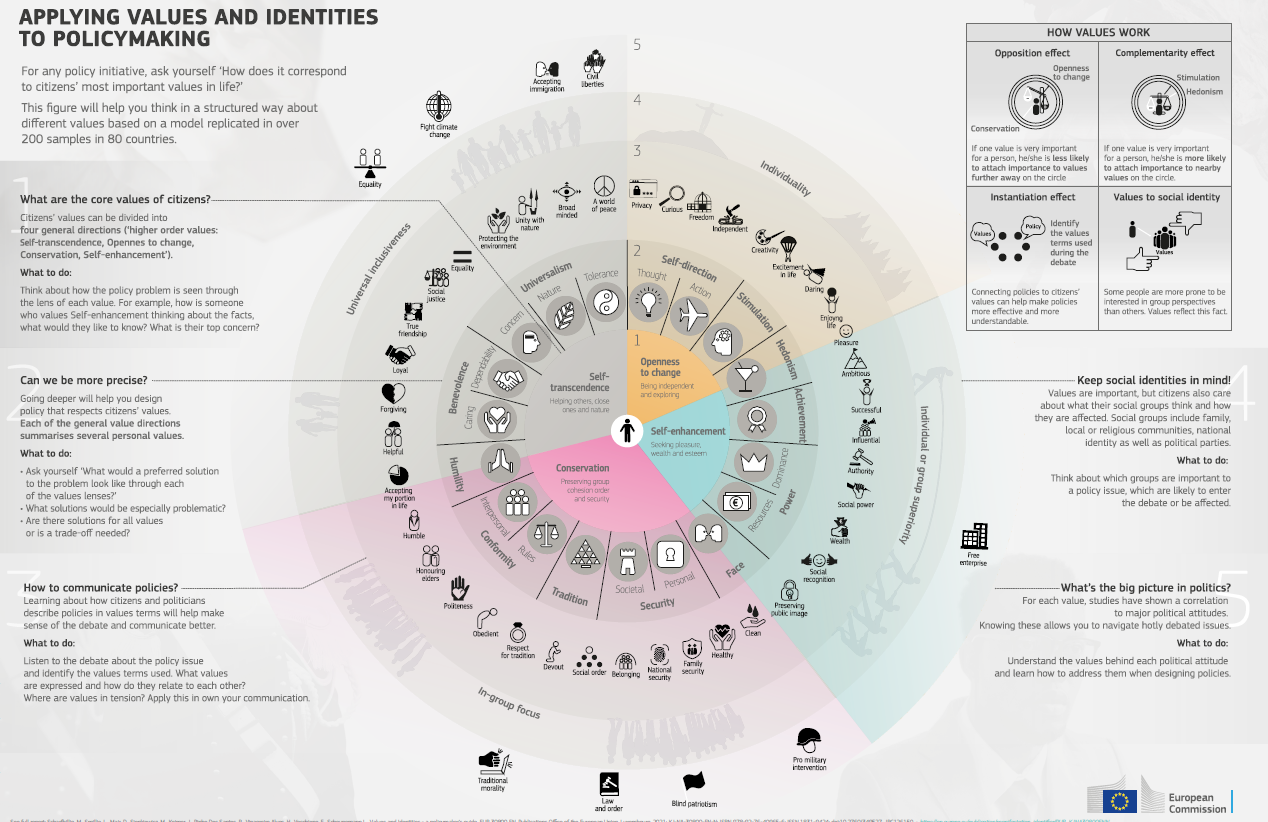
Given the rise in polarization and misinformation across society, a refined understanding of values is more meaningful than ever before. There’s minimal confusion about the fact that how we interact with the world is driven by what we value and identify with. But, it’s important to realize that because values also trigger appreciation of certain behaviors and distaste for others, an awareness of them can be an effective tool in helping organizations solidify relationships with key stakeholders.
A recent report by the European Commission, Joint Research Centre provides a unique look at values and identities and their impact on decision makers and communicators. The report also provides a powerful tool to map values and identities. The map helps marketers and communicators understand value tensions that impact communications, while identifying stakeholders and what motivates them.
The report notes:
- “Values are a blend of biological and evolutionary factors coupled with individual and societal histories. Values are highly stable at the individual level and are mostly shaped by life conditions during childhood, adolescence, and early adulthood through the influence of parents, neighbors, friends, and schools.”
- “Personal identity is based on a person’s values, experiences and knowledge, and is mostly perceived to be unique. The relevance of personal identity for policymaking comes from the argument that values are at its core, therefore, when one’s values are threatened, it is also true that the sense of self is threatened.”
- “Social identification can shift a person’s behavior to align with the group by ascribing characteristics, values and qualities of the group to the self and depersonalizing one’s personal identity. Identification of oneself and others into various social groups is human nature. Belonging to a group is a source of self-esteem and distinctiveness. The identification with a group can be an advantage for working together but can also be to the exclusion of others, as seen in many political conflicts of our time. The identification with one group often leads to a reduced willingness to interact and share with others and to perceive others as less positive.”
Understanding values and identities enables us to shape research and the gathering of information; accurately assess situations; check assumptions about publics and perceptions; and identify, prioritize, and understand key publics well beyond traditional demographics, geography, and identifiers. Communicators and marketers can utilize this research to develop more targeted messaging, while selecting a spokesperson who will be most appropriate for achieving desired outcomes. And, speaking even more broadly, a full awareness of values and identities can lead to the creation of increasingly effective communication goals and strategies.






Add a Comment
You must be logged in to post a comment